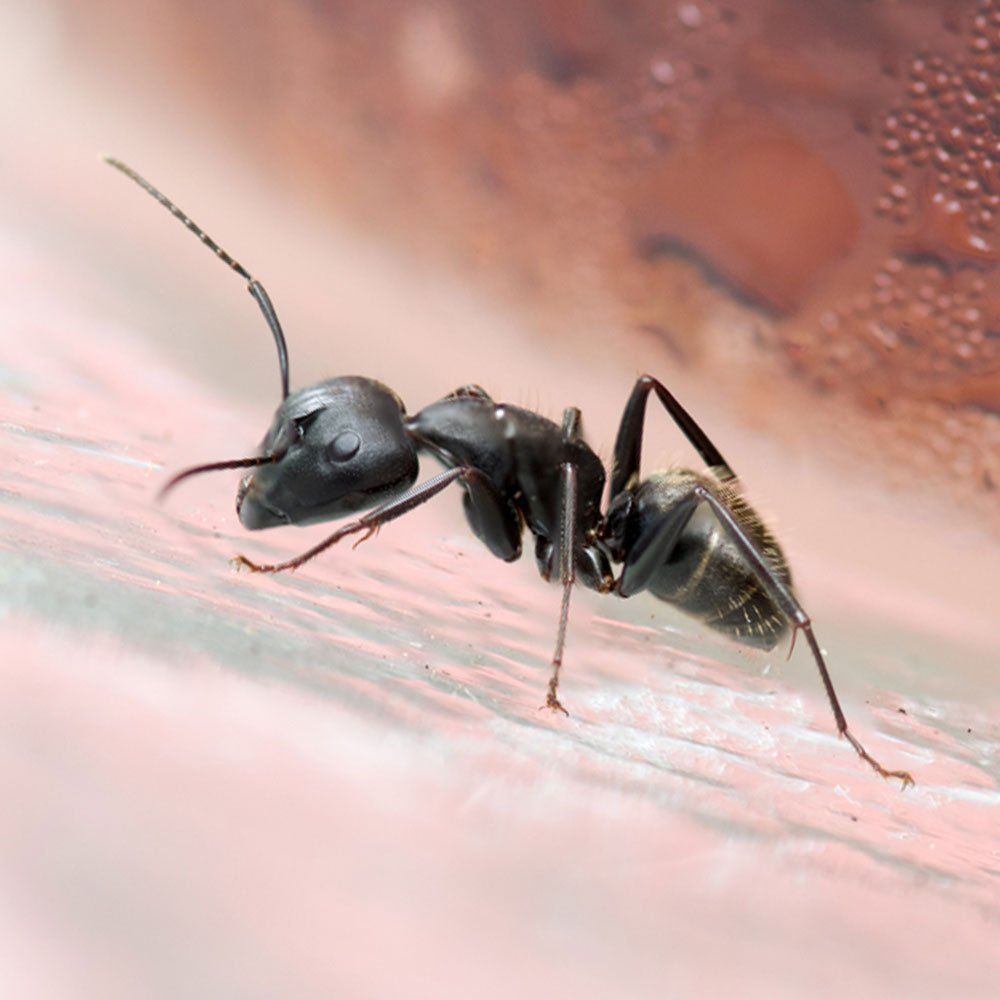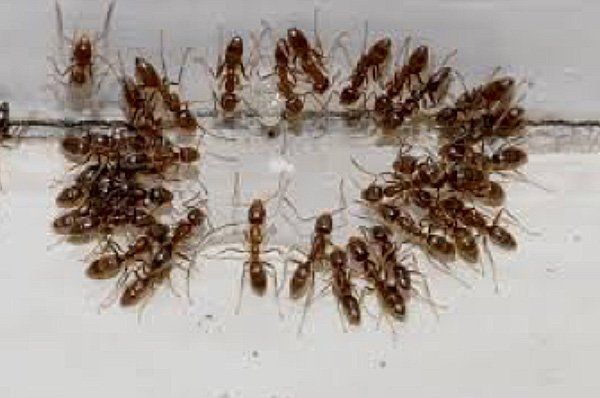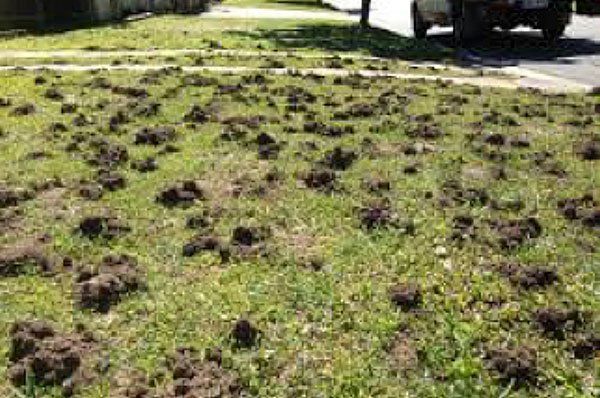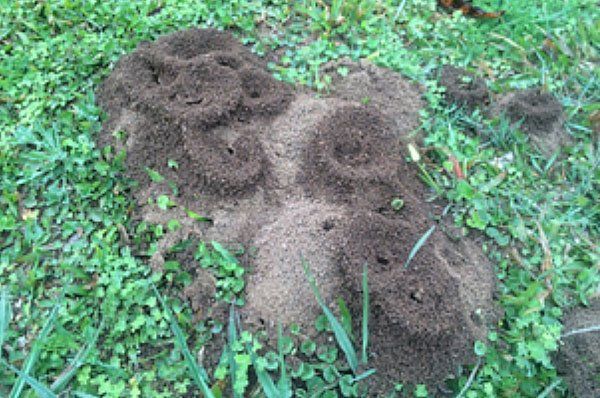Ants
Ants
> Back to Pest Library

Button
Button
Button
Button
Button
Button
Button
Button

Black House Ant(Ochetellus glaber)
Distributed along the east coast of Australia, they are 2-3mm long and live under rocks and mulch in gardens. They are often found in roof voids under insulation and in wall cavities. They prefer sugary foods.
( Black house Ants )
White footed ant(Technomyrmex spp.)
Distributed along the east coast of Australia, they are 2-3mm long and live under rocks and mulch in gardens. They are often found in roof voids under insulation and in wall cavities. They prefer sugary foods.
( White footed ants )
Pharaoh ant(Monomorium pharaonis)
This small ant is yellow-brown in colour with well-developed black eyes. Workers tend to be 1.5-2mm long, while the male is slightly larger at 3mm long and is a darker black colour with wings. The Queen is 3.6-5mm long, she is dark red and winged.
Widely distributed across Australia, they need warm, humid conditions which mean that in temperate lands they are confined to buildings and often found infesting hospitals. Infestations are discovered in a wide variety of locations including residential blocks, hotels, hospitals, zoos. In warmer climates, infestations can even be found outside. The insects locate themselves in roof voids and walls.
Pharaoh ants forage for sugars and proteins, they are not fussy eaters and will feed on just about anything.
( Pharoah ants )
Coastal brown ants(Pheidoe megacephala)
Commonly known as big headed ants they have major (3-4mm) and minor workers (2mm)
They vary from pale yellow to dark brown.
They are found around the gardens of your homes and coming up from paving and cracks in concrete. They are scavengers and can be found in your homes in the warmer months.
( Coastal brown ants )
Argentine ants(Linepithema humile)
Argentine ant workers move steadily in defined continuous trails and tend to walk over objects placed on trails. Their trails can often be found along smooth surfaces, and in the urban environment they are commonly found by pulling back the grass at the edge of the footpath. Trails can often be found ascending flowering trees and shrubs. Nests can be found under wood, stones, piles of leaves and in potted plants. They are medium to dark brown with smooth and shiny bodies.
They are not native to Australia, but were introduced through Tasmania in the 1970’s
.
Argentine ant nests are made in soil (especially gardens and pot plants) or sometimes in rubbish heaps, tree holes, bird nests or under objects on the ground. The nests are only 3 cm deep during the
warmer months, but these increase to about 15 cm deep in winter. The nest is usually located in moist
places and close to a food source. Nests are nearly always located outside the house and
may consist of a few hundred to several thousand workers and from one to over a hundred queens.
Workers are very aggressive to other ants but are friendly towards other Argentine ant colonies.
New queens leave the nest during the warmer months and walk along trails to find new nest sites.
This contrasts with many other ant species that fly to new nest sites. Because of their walk-dispersal and
lack of inter-colony rivalry, Argentine ants can build massive maze-like colonies spanning hundreds of metres.
Feeding Although sweet foods are preferred, Argentine ants will feed on almost every type of food. Meat, eggs, oils and fats are all foodstuffs known to be used by Argentine ants. Argentine ants love sweet foods and sometimes appear to go to great lengths to get them. Some are known to squeeze down the spiral of screw-top jars to reach their tasty, sweet contents! In the garden,
Argentine ants will protect honeydew-producing insects (eg, scale and aphids), receiving their sweet
excrement in return. If you look closely at an aphid in your garden, you may see them producing tiny
droplets of their sweet faeces, and maybe even an ant feeding from it. Some native species, as well as Argentine ants, feed in this way.
The colonies have multiple queens, developing colonies over vast areas (some over thousands of kilometres) making eradication impossible.
These ants can be kept at bay around your property with various baits, and persistent treatments.
( Argentine ants )
Carpenter ants(5-12mm)
Carpenter ants have a widespread distribution and are found across Australia. They live both indoors and outdoors but prefer to nest in moist wood. This may be the bark of a decaying tree, some rotting timber or in the home it could be a damaged wooden joist. When creating the nest, they tunnel through the wood but do not eat it as they don’t digest cellulose. Nests are created in moistened wood as this species requires moist and humid environment. Behaviour Despite the name, this species does not eat wood and prefers sugary liquids like honeydew and the sweet secretions of bugs such as aphids, hence why they tend to aphids on plants. They will also eat fluids and body parts of dead insects. The name derives from the ant’s preference for boring into wood when nest building. Rather than eat the wood, it deposits it outside the nest.
In general, Carpenter Ants tend to be a nuisance more than a destructive pest. Unlike termites, their work on wood is not necessarily rapid. However, an untreated infestation can grow fast and over time can weaken the fabric of a property. Their protection of aphids also leads to increased plant destruction by Aphids.
( Carpenter ant )
Green Headed ants(Rhytidoponera metallica)
This is a black ant with a metallic green sheen 5-7mm long. The green headed ant lives in soil such as lawns and under rocks. They are a generalist feed preferring animal material but really are general scavengers.
The green headed ant can deliver a very painful sting and, in some cases, can cause an allergic reaction.
( Green headed ant )
Funnel ants(Aphaenogaster pythia)
The funnel ant is 4mm long, brown in colour and forms an obvious funnel above ground.
The funnel ant will nest in lawns and feeds on seeds and sugar secretions from aphids that feed on the roots of grass.
Meat ants(Irdomyrmex purpureus)
There are a number of meat ant species in Australia commonly known as meat ants or gravel ants. Meat ants can reach a length of 12mm. Meat Ants live in sandy/gravel soils in urban areas, forests and woodlands, and heath.
Feeding and Diet
Iridomyrmex species, including Meat Ants, are omnivores (eat plants and animals) and forage during the day while other species of ants in the area may be restricted to foraging at night. Meat Ants, also known as Gravel Ants, build large nests underground and often place sand, gravel, pebbles or even bits of dead vegetation on the upper (mounded) surface of the nest. Large nests are common along some of Sydney's country roadsides and a single nest may contain 50,000 ants. Sometimes a number of nests will be part of one colony and can be spread over a wide area connected by numerous ant paths and trails. These super-nests are known to stretch up to 500m.
They are aggressive towards intruders, attacking other invertebrates, which they may eat, and driving off much larger animals by sheer weight of numbers. Border disputes may occur between rival colonies and are resolved by ritual fighting. Meat Ants and other Iridomyrmex species are often involved in mutually beneficial (symbiotic) relationships with caterpillars of different butterflies. The caterpillars supply sugary fluids to the ants, which in turn protect the caterpillars from predators.
Workers of the colony are equipped with powerful jaws and communicate with each other using chemical cues.
Bulldog ants(Myrmecia sp.)
Bull ants are very large up to 40mm with large eyes and jaws. They mainly feed on plant nectar and other plant juices. There are found all over Australia.
They have a very painful sting which in some cases can have an allergic reaction. Sometimes referred to as “hoppy Joes” The common red bull ant, Myrmecia gulosa is found on the east coast.
( Bulldog ant )
For more information
contact us today...
contact us today...
Phone:
02 4365 0596
Email:
Servicing Sydney, Central Coast
and Newcastle areas
Fully licensed and insured
Contact Us
Thank you for contacting us.
We will get back to you as soon as possible.
We will get back to you as soon as possible.
Oops, there was an error sending your message.
Please try again later.
Please try again later.
Talk to your
local experts
in Pest Control and Inspection Services
Talk to your
local experts
in Pest Control and Inspection Services
Our innovative pest control service is guaranteed to rid your premises of your insect problems, while our protection services make sure your property is always protected.
QUICK CONTACT
Thank you for contacting us.
We will get back to you as soon as possible.
We will get back to you as soon as possible.
Oops, there was an error sending your message.
Please try again later.
Please try again later.
CONTACT INFO
Address:
PO Box 3599, Erina NSW 2250
Phone:
Email:
Fully licensed and insured












